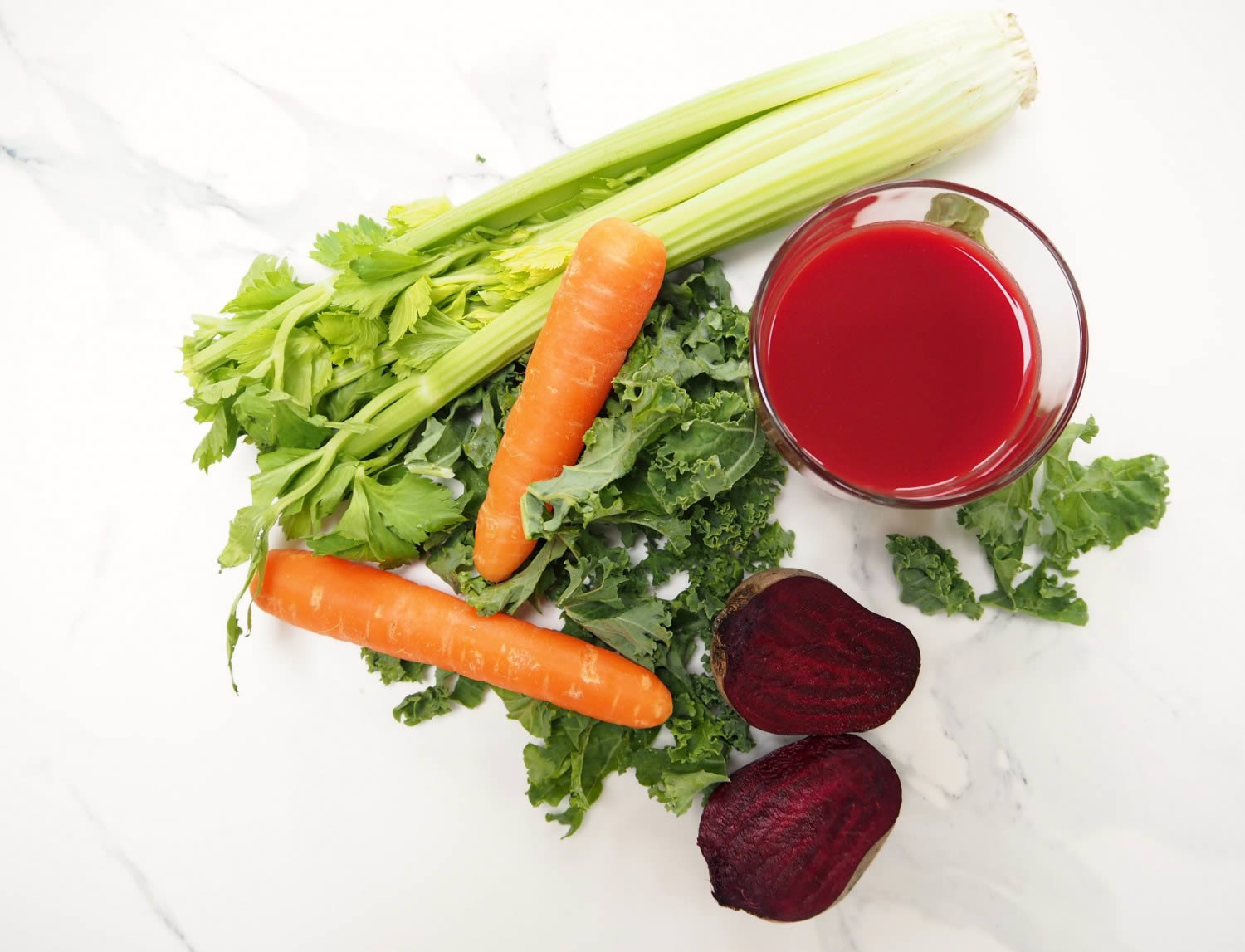I’ve become a bit of a juice addict. Not only do I feel so much more energised after my morning juice, I’m getting excited about all the various vegetables that I am getting through and the huge variations of vitamins and minerals they’re providing.
I firmly believe that juices and smoothies are an integral part of improving our overall health. We used to get most of what we needed from eating the recommended 5 portions of fruit and veg a day but these days the soil has become so depleted in many minerals from conventional farming that vegetables can contain fractional amounts of the nutrients they used to.
Experts now suggest that 8-10 portions of veg are ideal. That’s not actually that easy unless you’re chomping on some leaves most of the day but you can use a few pounds of veg to make an average glass of juice, that’s almost your daily quota in a glass. This nutrient injection gives you a healthy dose of potent vitamins and minerals needed to repair damaged cells, fight disease and help us look and feel great. If you don’t have a juicer, try blending softer ingredients like spinach, avocado and kiwi fruit or look for veg juices in cafes.
There are a couple things worth knowing to really make sure you’re getting all the benefits. The cost of fresh juce can add up and cleaning the machine is a hassle so you want to be sure its worth the effort:
Add a drop of oil to juice, or eat a nut, seed, spoon of yoghurt, anything really. Just make sure you have some fat as many of the antioxidants in vegetables are fat-soluble meaning your body has to be in fat-digesting mode to absorb them. You’ll be losing out on most of the benefits without a tiny amount of fat. Fruit juices have less of the fat-soluble nutrients so it’s not such a problem although the fat does help slow the rate the sugar from the fruit hits your system.
Drink it as soon as possible after making as some of the enzymes are destroyed when exposed to air. If you need to store some to drink later (which is better than not drinking it at all) try not to leave any room in the container so less oxygen can react with the juice. And make sure you keep it in the fridge.
Don’t add too many sweet fruits or veg such as apples, carrots, beetroot and pears. This sends your blood sugar levels soaring leading to all sorts of problems. It’s best to use one portion of fruit and the rest a combination of vegetables.
Vary the ingredients as much as possible and don’t juice cruciferous veg (kale, broccoli, collard greens, chard) or spinach (which contains oxalic acid) more than a couple of times a week as they contain compounds which can interfere with the thyroid, lowering its function. Rotation also ensures you’re getting a wider amount of all the vitamins, minerals and phytochemicals.
A bit weird, but swish the juice around your mouth or chew any bits as you want to be stimulating saliva as it contains digestive enzymes which help ensure you maximise absorption of the nutrients from your drink.
Vegetable juice recipe
You can really add anything you like to juice, but as a rough example, here’s what I put in my juice this morning:
2 handfuls kale
3 inch chunk of cucumber
2 inch fresh ginger
2 carrots
1 celery stick
3 drops of olive oil
If I have the time I prefer to make juice but it is way faster to make a smoothie as you just need to rinse the blender afterwards and can literally throw any soft ingredients in. Either way, they’re a great way for boosting your nutrients and ensuring you’re getting enough greens.
We hope you enjoyed this article, let us know your thoughts in the comments below or on our facebook page and don’t forget to sign up to our newsletter to receive more recipes, nutrition tips and expert advice.





